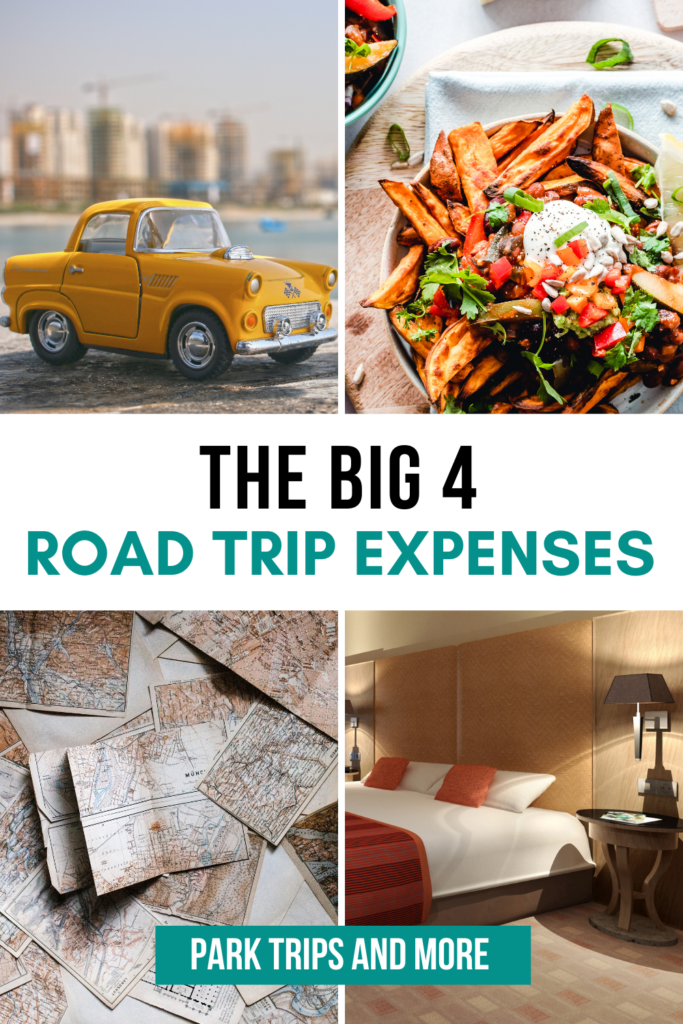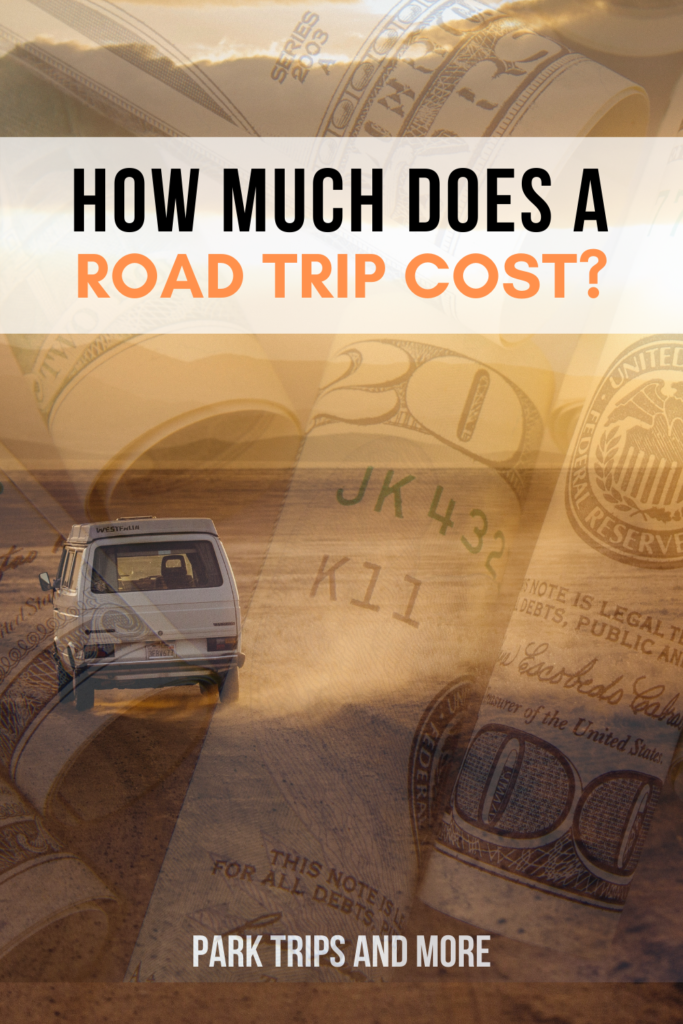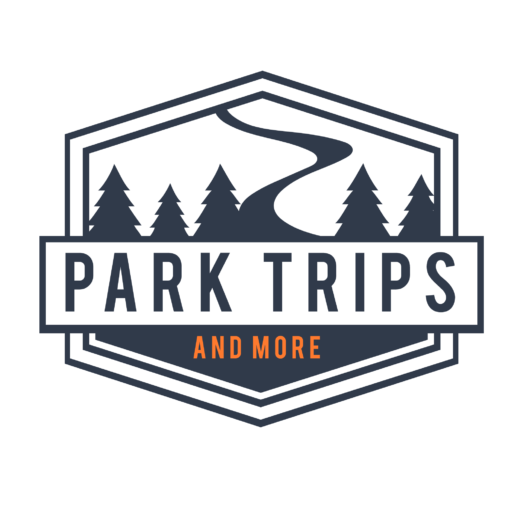Road trips are a lot of fun! Road trips can be associated with some anxieties as well. Budgeting and feeling confident that you can afford to travel can be a road block before you even leave your driveway! If you’re wondering “how much does a road trip cost?”, then you are not alone. Luckily, hitting the road while managing road trip costs is completely doable!
So, how much does a road trip cost? The answer is: it varies depending on a number of factors. My husband and I take several road trips each year, and are happy to share our road trip costs and budgeting considerations. Thinking through the the categories of expense that we discuss in this article is certain to leave you feeling in control of your trip plan!
What Typical Road Trip Costs Will You Experience?
Preparation is the key to success on a road trip! This includes making sure that your money situation is in order so that you can safely and responsibly enjoy positive experiences on the road.
The biggest road trip costs usually arise from what we’ll refer to as “the big four road trip expenses”. For us, these categories easily make up more than 75% of our spend on any given trip. Briefly, these are stated as follows:
- Accommodation: costs associated with where you will stay
- Transportation: costs associated with how you will get from place to place
- Food: costs associated with what you will eat
- Excursions: costs associated with what you will do on your road trip
There are other costs that are indirectly associated with taking a road trip. We’ll refer to these as “indirect road trip expenses”. These costs include the following:
- Road Trip Essentials: costs associated with things that you purchase to prepare for your road trip
- Clothing / Gear: costs associated with what you will wear on your road trip
- Pet Boarding / Pet Sitting (if applicable): while not everyone will have this expense, you may not want to take your pets with you and need to consider these costs as well
Finally, we’ll chat about “budget contingencies on a road trip” as you’ll want to make sure that you have a bit of a cushion in your budget to plan for the unexpected.



The “Big 4” Road Trip Expenses
Accommodation: Figuring out Cost of Accommodation on a Road Trip
Accommodation expenses are the costs associated with where you will stay while on your road trip. This can vary greatly based on a couple of factors: 1) how you travel (i.e. in an RV, Bus, Car, etc.), 2) where you are traveling through (i.e. certain parts of the country simply cost more than others), and 3) where you are comfortable staying (i.e. a travelodge vs. a five-star hotel).
If you plan to sleep in your vehicle, your accommodation expenses can be minimal. If you plan to seek out a comfortable hotel room, your accommdation expenses can amount to hundreds of dollars per night.
For us, we enjoy having a clear plan on where we will sleep when we embark on a road trip and very rarely hit the road without having made reservations at way points along our route. We are often able to do research on hotels in the area and understand what our expense will be before we hit the road. We typically reserve our hotels using the website (or Air BNB or VRBO) directly. When we do this, we know exactly how much our accommodations will cost.
We typically keep a spreadsheet of trip expenses to manage our road trip costs. Here, we will record the cost for each place that we book.
Transportation: Cost of Gas and Other Transportation Expenses on a Road Trip
Transportation costs include the cost of gas on a road trip as well as other vehicle related expenses.
The cost of gas on a road trip
The cost of gas on a road trip depends on the fuel mileage that your vehicle will use. This can vary depending on the type of driving that you will do. For example, flat stretches of highway where you can drive a consistent speed for long distances will be more efficient than city driving or mountain terrain.
It can be helpful to use a fuel cost calculator like this one which allows you to enter information about your car and trip. Or, you can do some “back of the envelope math” like we do. We map out our trip route using Google Maps. This then gives us a total number of miles for our trip. We typically will make an assumption about the number of miles we can get on a full tank of gas. This is possible when we use our personal vehicles since we have a good idea of the fuel economy that we typically get.
Tolls
Another transportation related expense is tolls. This can range from zero to significantly more depending on the route and the amount of time that you plan to spend on toll roads. If you use Google Maps to plan your route, you will get alerted when you will be traveling on a road where some portion of the road requires you to pay a toll.
Be aware that Google Maps will sometimes indicate that a toll is due when you enter a National Park that requires a fee. In these instances (like, for example, the Grand Canyon), if you have a National Park Pass, you don’t have to worry about any additional tolls or fees.
Other Vehicle Related Expenses
Other vehicle related expenses can include items like the cost to prepare your car for road trip (i.e. oil changes, tires, etc.), rental car expense if you plan to rent instead of taking your personal vehicle, and/or car services that you might purchase (like Uber or taxis). These expenses will depend on how you plan to travel as well as the condition of your vehicle. You will want to make sure that you prepare for these so that they don’t catch you off guard as these expenses can add up quickly.
Some expenses with getting your car in tip-top shape might be considered indirect expenses, but in any event, just know that you will want to adequately prepare for having enough to ensure that you have a safe ride.
Food: Determining the Average Cost of Food per Day on a Road Trip
We all have to eat. While on a road trip, accessing your routine fare may not be possible. So, how do you plan what you will eat on a road trip? And how much will it cost? Planning ahead will enable you to stay healthy and satisfied on your road trip. It’s good to go into the trip with an idea of what your average daily cost for food will be.
What will you eat on your road trip
First, you’ll want to think about the provider of food on your road trip. By this, I mean, where will your food come from and for what percentage of the time. Ask yourself the following questions:
- Will I eat at a restaraunt? What type of restaurant? How frequently?
- Am I able to carry a cooler? How often do I plan to make a meal?
- Does the place that I’m staying provide free meals with my stay? Will I take advantage of free meals? How frequently?
Now, think about your habits. Do you need three square meals and two snacks a day to function? If so, you’re looking at 5 food interactions per day. Answers to these questions might look something like this:
- Fast food ~10%
- Family Style, sit down restaurant ~15%
- Fancy Restaurant ~yes, please – at least once!
- Packed lunch/snacks (from cooler) ~50%
- Hotel free breakfast ~25%
Estimate the cost for each type of food venue
Estimate a cost for each category on your list. Think about your habits. When you go to a fast food joint, do you strictly order off of the value menu or spring for the super-sized meal? Fast food might cost ~$5-12 per person per meal. Another thing that you’ll want to keep in mind is that a fast food joint might charge more depending on where you are. Being from the midwest, we find that fast food is significantly more expensive out west for the same meal, and that prices are typically inflated in touristy locations.
When you visit a fancy, sit down restaurant, you can expect to spend more – especially if you choose a fancy destination with a famous chef. You might spend anywhere from ~$25-100+ per person per meal – plus tip.
Packed lunches and snacks can save you a lot of money, but you’ll also have to make sure that you plan for a few things. Namely, where will you purchase the food that you will make (depending on your road trip destination, you might have to plan ahead so you don’t wind up without options), and what types of preparation and preservation will your food require? Coolers require ice to preserve perishables (even PB&J have their safe eating limits) – and of course, ice must be refreshed after a period of time lapses. Some items require a stove or microwave to prepare – will you have access to these appliances? Self-prepared meals and snacks can range as well, but typically can be controlled. You might spend anywhere from $2-5 per person per meal.
Plan for a Food Contingency in your budget
Finally, budget for some amount of contingency. Driving (especially on a long road trip) can take more of a toll on your body than you may realize. I find that we consume more coffee than normal when we’re on long stretches of road (passing by a sign that promises a nice Cup o’ Joe when miles of open road ahead is unheard of in our vehicle 🙂 ), and it’s oh-so tempting to grab an unplanned candy bar when making a stop at the gas station.
There’s also a chance that one of those free hotel meals that you planned for isn’t quite hitting the mark. Instead, the unexpected diner around the corner is advertising a plate of homecooked local fare is calling your name.
I recommend planning for an extra 10-20% of your total budget to be make up for these types of unexpected (but necessary) splurges.
Excursions: Budgeting for Activities on a Road Trip
Expenses related to your excursions have to do with the experiences that you plan to have on your road trip. Again, these can vary greatly. Many areas that you might visit will have free activities like enjoying no fee parks and festivals. There are also bucket list experiences that you might want to have that require you to budget. For example, we enjoy booking guided tours, fishing charters, museums and the like. Many times, there is some fee associated with these activities.
Many times, you will be able to research these experiences before you hit the road to make sure that you’re covered. I’m a big fan of contingencies when building a road trip budget, so I always like to plan for an unplanned excursion that catches my fancy by setting aside an additional 10-20%.



Determining Indirect Road Trip Costs
Indirect road trip costs are those costs that are not directly related to the trip, but rather are things that will help to make your trip easier or better (for example, a GPS device isn’t directly necessary on a trip, but can make your trip safer, especially if you drive through areas where you lose your phone connection). Often, these indirect expenses will depend on what you plan to do on your trip.
Road Trip Essentials
Check out this post on road trip essentials that can help with your trip.
Clothing / Gear
Depending on where you go, you may need to procure clothing that you don’t currently have in your wardrobe. For example, going on a beach vacation when you live in a cold environment might prompt you to purchase swimwear and sundresses. Consider where you are going and what you might need to be prepared in terms of clothing as an indirect road trip cost.
Pet Boarding / Pet Sitting: Boarding a Pet While on a Road Trip
A rather large expense for us is boarding our three dogs when we take long road trips. This may not be applicable, but keep the care for your pets (or childcare or housesitting) in mind as your situation requires.
Other Expenses and Budget Contingencies on a Road Trip
Add up all of the expenses for each category. Once you do this, you’ll have an idea of what your road trip will cost. You only have one more step at this point: contingency.
Make sure that you also plan for contingencies. As a guide, you might want to add 10 to 20% extra (above and beyond the amount that you compute for your trip). This extra comes in handy if you want to purchase souveniers or keepsakes or to handle any unexpected emergencies that pop up while you are on the road.
Conclusion
In conclusion, it’s possible to estimate how much your road trip will cost when you consider the Big 4 expenses and the other indirect expenses that you should have on your radar. If you find that your planned trip will cost more than you’d like, you can always consider trimming the amount of “luxury” or the length of the trip in order to manage the costs within your budget.
Happy exploring!

